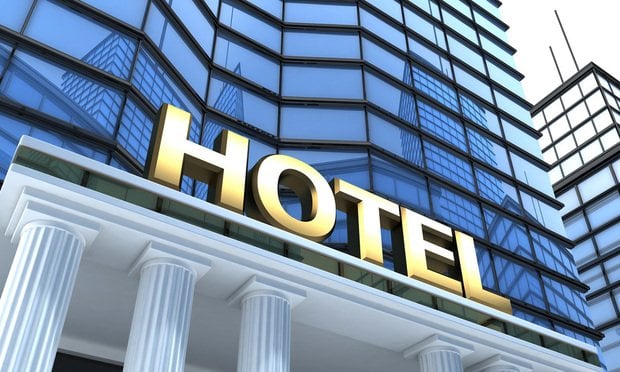In 2003, the total number of properties that sold for more than $1 million rose to 138, nearly doubling the previous year's figures. The total sales volume more than doubled, jumping to $2.1 billion from $868 million in 2002. Cut either way, the numbers set record highs for the island state, according to Colliers.
Looking ahead, there are now 133 properties on the market at a combined asking price of $1.4 billion. "These available properties are likely to be purchased quickly as demand for solid real estate investments continue to remain at high levels," concludes the report. Indeed, based on a UBS/Gallop Poll of investors, 46% of the respondents anticipate they will invest in real estate in 2004, up from 40% three years ago, and the National Association of Real Estate Investment Trusts predicts 2004 demand for real estate securities at $20-$30 billion.
Of the 138 transactions last year, more than 26% were classified as retail/mixed use, 20% were for industrial and 17% were for multifamily properties. In terms of dollars spent, the spread was pretty even. The industrial sales volume was $566.1 million or 27% of the total sales volume, while hotel/golf property sales totaled $531.8 million or 25% of total sales volume and office property transactions totaled $489.6 million or 23% of the total sales volume.
Topping the list of largest transactions was the Damon Estate industrial land portfolio sale to HRPT Properties Trust for $480.5 million, followed by Host Marriott's $321-million purchase of the Hyatt Regency Maui and A&B Properties $135-million purchase of the Shinwa Golf Portfolio. The Shidler Group's sale of Waikiki Galleria for $125 million and their subsequent purchase of Davies Pacific Center and the Pan Am Building for $90 million resulted in the office market's largest transactions for the year.
Colliers lists several factors that contributed to the hot market in 2003. They include: the continuation of a low interest environment, which allowed to increase their leverage positions and purchase more properties; stock market volatility, which encouraged many investors to hedge their investment portfolios with real estate, which averaged higher returns than the equity markets for the past three years, and; a shortage of solid commercial real estate investments in many Mainland markets, which prompted investment funds to widen their property search criteria to include Hawaii. As an example, Colliers says the supply shortage helped increase competition for the Damon Estate Portfolio, which elicited 22 bids from various pension funds, REITS and private investors.
Of the properties now on the market, hotels make up the majority. In its forecast, Colliers predicts that the rebound in domestic and international air passenger arrivals and the healthy recovery in hotel occupancy rates should boost hotel and timeshare property values over the near term. As well, the report says there has been increased interest in converting older low-occupancy budget hotel properties into renovated timeshare units, which could provide high returns. Because timeshare owners are less likely to cancel their vacations, both Maui's and Kauai's hotel occupancy rates are benefiting.
On the industrial front, Colliers says industrial investment properties will continue to be in short supply. For those located in the urban-core of Honolulu and on fee simple land, sellers are likely to get top dollar from owner-users. In fact, gentrification has already occurred among many Kalihi-Sand Island IMX-zoned properties where land prices have escalated to $75-$90 per sf, according to the report.
Although speculative building is anticipated by mid-year 2004, it is unlikely to result in any sizeable change to the current tight market conditions, according to the report, which forecasts that vacancy rates will drop to 2.2% by year-end 2004 from 2.69% currently. And after posting a 36% increase to industrial average asking rents, Colliers is anticipating double-digit rental rate increases for 2004 as well.
The office market, having been in the doldrums for the past three years, recently posted its first positive signs by registering nearly 200,000 sf of positive absorption, most of which occurred during the last half of 2003. Vacancy rates fell to 11.84% from 13.62% a year ago, according to the report. State economists are forecasting solid job growth in 2004, which should result in additional positive absorption and a further decrease in the vacancy rate. Rental rates are expected to increase for Leeward Oahu and among class B properties in the Kapiolani Corridor, where vacancy rates will likely fall below 8%. The overall average asking rent for Oahu should post nominal increases for the coming year, according to the report.
The retail vacancy rate is expected to improve from 2003, when it rose from 5.4% to 8.5% thanks in part to the closure of JCPenney's and McInerny's. "We anticipate that continued strong leasing activity should remove much of the recently vacated space and result in an appreciable decline in vacancy rates for 2004," states the report. "Rental rates should stabilize after posting six consecutive years of decline."
In the multifamily market, the popularity of selling apartment units as condominiums has left only a limited number of multi-unit apartment complexes, most of which were built pre-1970. As a result, demand has been high, pushing cap rates into the 5%- 7% range, however; the report predicts that improvement among stock market indices should curb the appetite for some of the investors that previously sought out apartment complexes as safe haven for their money in commercial real estate investments.
Continue Reading for Free
Register and gain access to:
- Breaking commercial real estate news and analysis, on-site and via our newsletters and custom alerts
- Educational webcasts, white papers, and ebooks from industry thought leaders
- Critical coverage of the property casualty insurance and financial advisory markets on our other ALM sites, PropertyCasualty360 and ThinkAdvisor
Already have an account? Sign In Now
© 2024 ALM Global, LLC, All Rights Reserved. Request academic re-use from www.copyright.com. All other uses, submit a request to [email protected]. For more information visit Asset & Logo Licensing.







